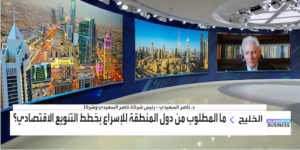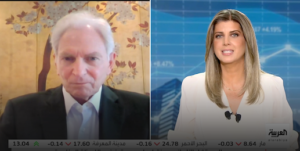[This article originally appeared in the Financial Times on June 30, 2014.]
Regional trade agreements are in place, but enforcement is lacking and benefits are not visible
Like Arab unity, the ambition of boosting intra-Arab trade has been a litany of bright promises but dismal performance.
Regional trade agreements are in place, but implementation and enforcement are lacking and benefits are not visible. They are, in Arabic idiom, just “ink on paper”.
Trade with each other accounted for 8.6 per cent of Arab states’ total trade in 2013, according to the World Trade Organisation, with the bulk being oil and related products. By contrast, intra-EU trade was 62 per cent of the total for EU countries.
But why is the region’s internal trade so low?
Trade barriers are one culprit. Average tariffs have been reduced and are converging to global levels but they remain high, and their spread across countries and products is large. Also, lack of uniform standards and harmonisation works against trade and investment flows and the creation of a common market.
More significant obstacles are the region’s high non-tariff barriers, such as technical and health standards, along with pervasive red tape, all of which discriminates against both international and regional trade.
Nor is it easier for trade in services, the world’s fastest growing segment.
Bilateral and regional trade agreements typically omit services. Licensing, controls, permits and regulatory barriers impede services and the movement of people.
The restrictions make it more efficient for a MENA services provider to operate from outside than inside the region. It is easier for a foreigner to travel to any Arab country than an Arab!
But what would be traded if the barriers were removed? The structural barriers loom large. The legacy of inward-looking, protectionist regimes bent on import-substitution in the Maghreb (northwest Africa) and Mashreq countries (Egypt, Lebanon, Palestine, Jordan, and Syria) and dominated by state-owned enterprises continues to hinder export competitiveness.
These countries have also relied on primary commodities and resource-based products (cotton and phosphates) rather than innovation or trade in inputs and new products.
It is easier for a foreigner to travel to any Arab country than an Arab!
In the more advanced countries of the GCC, the lack of economic diversification – heavy dependence on low-value-added oil and gas, which represent more than 85 per cent of export values – and similar production structures have limited intra-GCC trade.
And deficiencies in cross-border transport and logistics and lack of trade facilitation have hampered intra-GCC trade – witness the long lines of trucks waiting to enter Saudi Arabias from Dubai!
So what should be done?
First, Arab countries should invest heavily in trade-related infrastructure and trade facilitation.
International economic integration is embedded in global supply chains and requires investment in both physical and “soft” infrastructure to break down physical barriers and reduce the costs of communication, transport and logistics.
This is an opportunity to involve the private sector through effective public-private partnership frameworks.
This is also the occasion for the GCC to assist other Arab countries by integrating trade-related infrastructure and logistics: ports, airports and supply chains should be linked to GCC trade infrastructure and facilities.
Second, the GCC should invite the Arab countries in transition to join its free trade area, either as full members or through economic association agreements that would promote trade, investment and labour mobility.
The agreements should be comprehensive, facilitate direct investment and include trade in services.
This would be an effective policy instrument to help restore growth, create jobs and reduce geostrategic risk for the GCC from the turmoil of the Arab firestorm.
A GCC-anchored free trade agreement would enable the region to negotiate international trade agreements as a bloc, strengthening its negotiating power.
Third, global economic geography has shifted towards emerging economies and Asia, dominated by China and potentially a resurgent India under its new leader Narendra Modi.
The Arab countries need to “pivot east” and develop their bilateral and multilateral relations with Asia and China.
The cornerstone would be a GCC-China free trade agreement. Economic policy should focus on building the “New Silk Road”, the new global demand and supply chains emerging from China whose tendrils are growing into Asia, Africa, the Middle East and Latin America.
The region should not miss its opportunity of being an integral staging post on the New Silk Road.
At a time when the Arab world is in turmoil and transition, the GCC countries – the engine of growth for the region – should seize the opportunity to take a leadership role and move the region towards greater trade and financial integration.
This would encourage job creation and lead to more inclusive growth.





